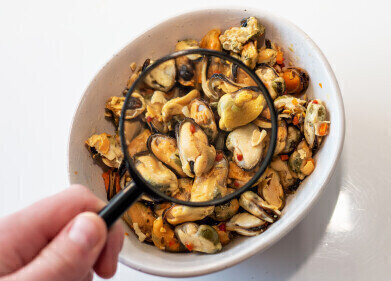GC-MS
What Makes the Perfect Apple Flavour? - Chromatography Explores
Jul 16 2020
Which apples do you choose at the supermarket or greengrocer? Do you always buy the same varieties? Is it colour or smell that makes you pick? Or do you choose the highly polished apples that have a coating of wax to keep them looking fresh for longer? A recent study published in the Journal of Food Quality reports on work carried out by researchers in Wales into a link between apple aromas and customer perceptions of apples. The work used gas chromatography to analyse the volatile organic compounds present in apples. Let us take a quick look at how chromatography could help apple growers and consumers choose the perfect apple.
Visual and organoleptic clues
When consumers choose apples in the store, they usually use various factors to help them. The appearance of the apple, the smell of an apple and an apple’s texture can all help a consumer choose which apple to purchase. Studies have shown that consumers rely on these visual and organoleptic clues when they are choosing foods, including apples. There have also been studies that have reported on the various sensory qualities of apples, giving researchers a lexicon that can be used to describe the most important attributes that consumers choose when it comes to apples.
It is no surprise then that research into the aroma profiles of apple cultivars is an important topic for apple producers. It can help growers to select the best cultivars to grow for commercial marketing and to allow for better quality control of flavour, aroma, and texture. Research can also indicate which apples store best and preserve freshness, so the apples appear as ‘just picked’ from the orchard. In the study Analysis of Apple Flavours: The Use of Volatile Organic Compounds to Address Cultivar Differences and the Correlation between Consumer Appreciation and Aroma Profiling, researchers analysed VOCs to assess which compounds had an impact on the sensory properties important for consumers.
Thermal desorption and gas chromatography – improving apples
The authors of the study referenced above considered four apple cultivars, Gala, Smitten, Rubens and Granny Smith that were available in a Cardiff, Wales supermarket. They asked consumers to bite into the apples and rate them for taste, smell, texture, crispiness, sweetness, and acidity. They also used TD-GC-MS (thermal desorption-gas chromatography-mass spectrometry) to analyse the volatile compounds in the apples. The use of chromatography to analyse samples from agriculture is discussed in the article, The Detection and Quantification of Dicamba and Acid Herbicides in Agricultural Samples.
Forty compounds were identified by MS, with eight of these compounds not previously identified in apples. Comparing the sensory and analytical data revealed that the compound 4-hexen-1-ol acetate was associated with crispiness and 2-methylbut-2-en-1-yl acetate with juiciness and acidity. This demonstrates that experimentally determined compounds could be used as markers for consumer appreciation of fresh apples. The work could help reduce the need for expensive tasting panels, using simple GC in their place.
Digital Edition
Chromatography Today - Buyers' Guide 2022
October 2023
In This Edition Modern & Practical Applications - Accelerating ADC Development with Mass Spectrometry - Implementing High-Resolution Ion Mobility into Peptide Mapping Workflows Chromatogr...
View all digital editions
Events
Apr 23 2024 Kintex, South Korea
Apr 23 2024 Seoul, South Korea
Apr 28 2024 Montreal, Quebec, Canada
May 05 2024 Seville, Spain
May 15 2024 Birmingham, UK














